Mind your language: phrases in recruitment that put off women in tech
A woman in tech looks at how words can hinder (and help) the hiring of gender-balanced teams.
With women currently making up only 29% of the UK tech workforce, removing gender bias from the hiring process is critical to attracting women into tech.
That removal of gender bias is also critical to retaining them in the IT sector.
Choice of words matter massively
Central to this two-fold goal is the language that us recruiters, employers, end-clients, job-boards and every other IT worker and tech sector stakeholder, choose to use, writes Danielle Keegan, head of permanent recruitment at IT staffing agency VIQU.
What am I talking about?
Pronouns, gender-neutral language and awareness
Well, using the correct gendered pronouns when speaking with a person is a great starting point.
Being aware of pronouns when addressing people when not face-to-face, while at other times adopting gender-neutral language, such as in job titles, is similarly incredibly important.
Such awareness of pronouns and gender-neutral language should actually permeate the entire hiring process.
Then, this dual awareness should be continued once the technologist is in the workplace.
And while it doesn’t need to be complicated, awareness of both pronouns and gender-neutral language has the potential to exert a hugely positively impact on the proportion of women in tech.
Gender-neutral language: the not great findings for tech employment
At first glance, you might think that pretty much all language is gender-neutral! You’d be wrong.
A variety of academic research suggests that certain words carry a stereotypical weight for one gender — or the other, and that this can support gender inequality in sectors that have typically been male-dominated.
For example, researchers from the University of Waterloo and Duke University discovered that small changes to favour masculine and feminine language, led to more applications of the corresponding sex.
However, the research highlighted that women on the whole were more affected by the changes more than men. The result? They didn’t make a job application.
Job boards, and hackers? They’re part of the tech industry’s language problem too
Unfortunately, language leaning into men at the expense of women is on job boards too.
Total Jobs assessed 75,000+ job adverts and found that only 20% were gender-neutral in their use of language.
Related, in 2015, a company called Buffer realised that less than two per cent of their job applicants came from women! And they discovered that, in part, this extremely low level of women trying to get into their tech workforce was due to the same word they constantly used in their technology job adverts; “Hacker.”
In addition, 2019 research from LinkedIn shows that using words like “aggressive” in job descriptions would put off 44% of women from applying, whereas it would only discourage 33% of men from applying.
Language in the technology staff hiring process
Language used in the hiring and recruitment process can set gender expectations.
From an employer perspective, language can encourage hiring managers to assess job candidates and existing team members based on unconscious biases.
And doing that can ultimately impact who is hired and who gets opportunities for promotions.

Unwelcoming words. Do you or your organisation utter them?
Likewise, for women looking for tech roles, language in job adverts and the hiring process can indicate how inclusive a workplace is, which could encourage — or discourage — a job application.
In research from the National Academies of Sciences, Engineering, and Medicine, this was confirmed, insofar as an abundance of masculine language in IT job adverts led women to view the sector as “unwelcoming”. The result?
Women avoided applying for roles in the tech industry.
Two quick wins to make tech job titles and terms inclusive
I believe the first language-related step that employers need to take to help increase the proportion of women in tech is to review:
– out-of-date job titles that have masculine connotations (‘hacker’)
– industry terms that have masculine connotations (‘competitive’)
As the NASEM study points out, companies interested in taking these two steps can obtain insights from the likes of the Anita Borg Institute and National Center for Women & Information Technology (NCWIT)
The study observes that both these outfits can provide interested parties with examples of gender-neutral language and job postings.
Legacy job titles
‘Scrum master’ is another example of a term that is likely not to appeal to women.
Using the term ‘master’ can give connotations of men, white men in particular, and even a slave mentality.
Tech evangelicals might like to argue that the role of a Scrum Master is to have ‘mastered’ Scrum. And they would also say it is in no way related to the ownership of the team!
Scrum Master, like Web Master, it's on the way out…
But why, then, are there lots of companies that are moving away from using the term ‘Scrum Master’? Why are many such companies replacing it with titles such as ‘Scrum Lead’ or ‘Scrum Champion’?
Likewise, ‘Web Master’ has become ‘Web Product Owner’ in many companies looking to recruit across the board.
The odd word disappearing and being replaced in a tech job title might seem like a small change.
But ensuring these legacy job titles are replaced with gender-neutral terms is a pretty easy step for companies to take, if we’re serious about ensuring women in tech don’t feel alienated.
What can companies do to use a language that all IT job candidates speak?
To ensure their language speaks to the entire tech candidate pool, companies should look internally at their culture and environment.
If the aim is to recruit gender-balanced teams, such an internal look needs to extend to how companies use language to effectively create a picture.
Then, looking beyond the company’s four walls, how is that picture being communicated to women in the tech community?
What women in tech said about our investment bank client
One of our directors who has been working in tech recruitment far longer than me shared how a banking client back in the early 2000s was struggling to hire any women.
When our director spoke with individuals with the right skillset who were women, the answer was always something along the lines of:
“It’s investment banking, I’m not going to be welcome.”
And:
“It’s a big financial institution, it’ll be very long hours.”
Pleasingly, the bank took a forward-thinking approach.
They started introducing flexible working. They set up an on-site creche. And they organised a number of staff ‘after-work’ clubs, including chess, tennis and netball.

Removing ‘male words’ for tech job descriptions
How does this relate to inclusive language in recruitment? Well, I’m told the bank was very clear with its recruitment partners that they wanted to remove certain words from their tech job descriptions.
But also, in any correspondence with candidates, whether that be verbal or in emails, the bank wanted all partners to communicate the positive actions which the bank had taken (and will be taking), to improve their environment
The bank also highlighted the importance of recruitment partners being aware of the language they were using, throughout the hiring process, to limit the chance of alienating women.
Jobs adverts and the hiring process must speak the same code
As a whole, the tech industry needs to continue to make positive strides towards removing masculine language from job adverts to more widely achieve the recruitment of gender-balanced teams.
But the entire recruitment process needs to follow suit with gender-neutral words and phrases.
Whether that’s in job adverts, in verbal communication with recruiters, during the interview stage or onboarding; minding your language is key.
Are there technology industry job terms that turn off men?
However, we all need to be aware of not disengaging the male technology workforce.
It’s a balancing act and that’s why the use of gender-neutral language, so nobody feels left out, is so important.
Consider research from the National Academies which found that very minor gender bias is widespread in job adverts for typically male-dominated fields, including computer science.
Common male-coded and female-coded words in job adverts
The common male-coded words used included:
- ‘Competitive’
- ‘Confident’
- ‘Lead’
- ‘Analyse’
The common female-coded words used included:
- ‘Understanding’
- ‘Dependable’
- ‘Supportive’
Let's press delete on 'man-hours'
For my part, a word that I unfortunately see time and time again in technology recruitment is “manpower”.
Also, still somehow in 2024, “man-hours.”
Being aware of subtle gender bias like these can only be a positive thing in creating engaged, productive, gender-balanced teams so that ‘exclusion’ (and not ‘women’) is put on the backfoot.
Is it time your company reached for a gender decoder tool?
By using a ‘gender decoder tool,’ and being aware of advert placement, companies can ensure that they are creating awareness that is conducive to both hiring gender-balanced teams and even to establishing a diverse audience for their products and services.
And that’s an audience that will be more likely to engage with them as potential employers. In turn, such candidates will surely be more likely to stay in the tech roles they’ve gone forward for.
After all, they hopefully felt the interviewing, recruitment, workplace, and retention process all spoke to them in terms and language they understood and ideally, even liked, making them feel addressed and accounted for — not overlooked or alienated.

Danielle Keegan
Danielle Keegan is a technical IT recruiter with 14+ years’ experience in identifying and securing the best permanent IT talent for businesses across the UK.
As an associate director and head of permanent recruitment at VIQU IT, Danielle plays a pivotal role in driving the business forward and contributing to innovative solutions for VIQU’s clients and candidates.
Danielle is passionate about encouraging more women to consider careers in tech and takes prides herself in leading the conversation at VIQU IT and among her client base. These efforts include spearheading a Women in Tech interview series and introducing new processes to household name clients to reduce unconscious bias and encourage more opportunities for women working in tech.




